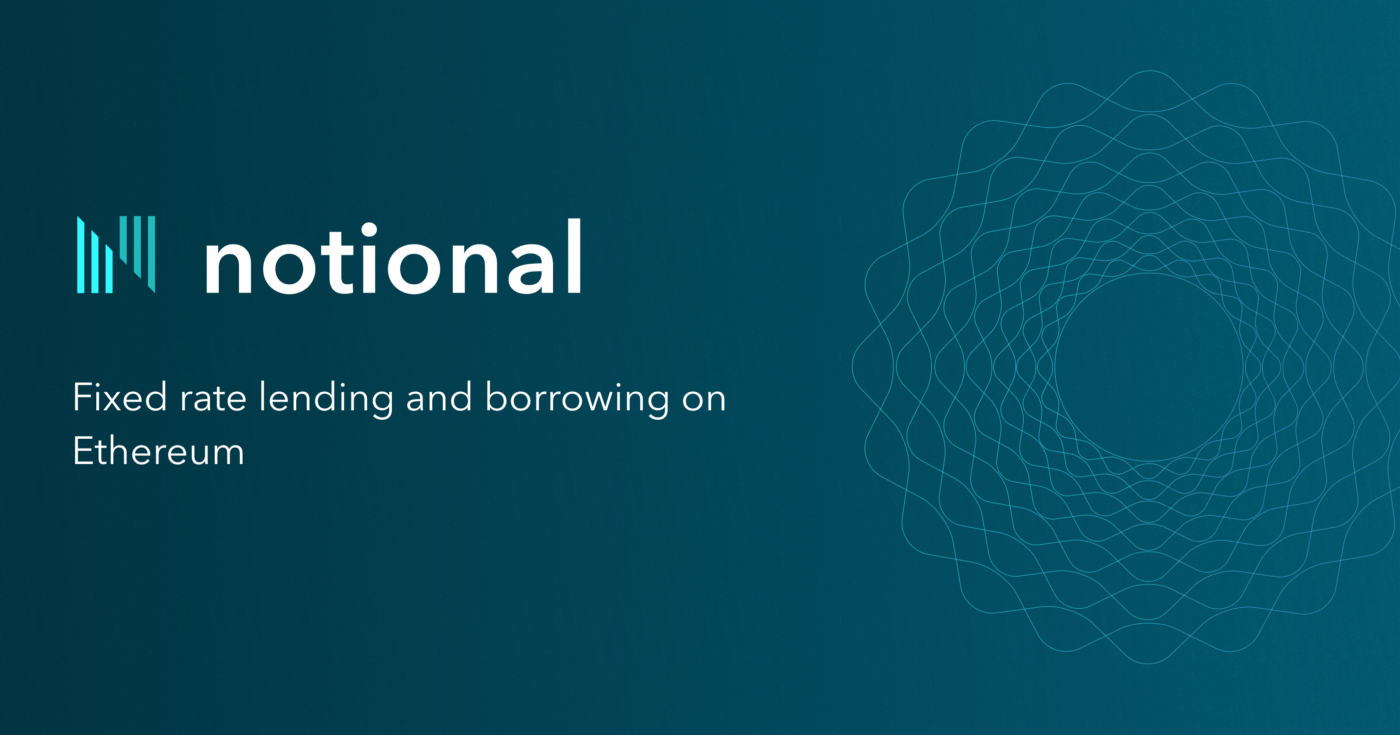
Why Fixed Rates Matter
Originally published Nov 12, 2020
Fixed rates move DeFi forward. Today, DeFi can only serve a small segment of the crypto lending market because variable interest rates don’t provide the certainty that lenders and borrowers require. Capital allocators place an outsized value on stable, predictable returns. Borrowers value stability as well. Fixed rates ensure that volatile financing costs don’t threaten their profit margins or distract them from their goals.
The introduction of fixed rates to DeFi will expand and diversify the user base of DeFi lending markets and would give DeFi projects increased access to capital. The availability of debt-based financing options for token projects would increase innovation and have a positive long-term effect on DeFi’s development and growth.
Capital allocators value certainty
Working in DeFi can make it hard to remember that people are risk-averse, and the decisions they make with their money reflect that. Let’s take a look at traditional finance for a moment. In 2019, the US Government issued $1.2 Trillion at interest rates in the low single digits, if not less than 1%. US corporations issued another roughly $1.3 Trillion in debt in 2019 at an average spread to treasuries of only 1.13%. That’s over $2.5 Trillion in debt purchased at yields well under 5% in a single year.
In contrast, the S&P 500 returned over 30% in 2019. That was a particularly strong year for equities, but average annual returns since inception for the S&P 500 are still roughly 10%. This begs the question — why did investors buy bonds in such great quantities, and at such high prices, when they could have allocated that money to assets with significantly higher average yields? Though things in finance tend to defy neat explanations, we know for sure that the riskiness of equities played a big role here. Equities can expose investors to sharp losses and increase the risk of an investment portfolio. Bonds on the other hand, are safe, certain, and predictable. Whether those qualities sound important to you or not, rock-bottom bond yields demonstrate the value that investors place on them. Capital allocators are willing to give up a lot of potential upside in exchange for a secure return.
Borrowers want certainty too
Certainty is just as important for borrowers as it is for lenders, if not more so. For most people, borrowing money is a means to an end. Borrowing at a fixed rate means one less thing to worry about. Whether you’re investing in mining equipment, building a business, or financing a yield-farming strategy, fixed rate borrowing ensures that your profit margins are protected.
Traditional financial market activity shows the value that businesses place on this certainty — in 2019, 94% of US corporate bonds outstanding were issued at fixed rates.
The size of the predominantly fixed-rate CeFi crypto lending market shows that crypto consumers and businesses value rate stability as well. The CeFi lending market is big, and it’s diverse. The Q2 2020 Credmark report put outstanding crypto debt in CeFi at $4.6 Billion — and that figure only captures the beginning of the explosion in loan interest due to yield farming. CeFi lending markets cater to a set of users that DeFi can’t currently serve.
- More sophisticated trading firms may choose to fund themselves with fixed rate borrowing because they pursue strategies that produce more consistent, but lower, returns than pure speculation. Variable rate financing puts their profit margins at risk.
- OTC lending desks prefer to borrow at fixed rates because they pay their customers fixed rates on their deposits. Variable rate borrowing would produce a funding mismatch and introduce risk into their businesses. This risk could jeopardize their margins.
- Miners and crypto projects may want to borrow against their crypto holdings to fund their operations and investments instead of selling their crypto because they are bullish on prices and believe that future appreciation more than covers their interest costs. But it’s much easier to make that decision if you know exactly what your interest costs will be.
DeFi can’t provide certainty, and that restricts its potential
The users of CeFi lending markets can’t use DeFi as it exists today because the interest rates in DeFi are too volatile. Over the course of this year, Dai borrowing rates have fluctuated from as little as .5% annualized to as much as 20% annualized. This creates problems for everyone. Borrowers can see their financing costs increase by an order of magnitude over the course of a month, and lenders can see their returns dissipate just as quickly. As a result, DeFi serves only a small slice of the crypto lending market and misses out on the many lenders and borrowers who value the stability of fixed rates. Fixed rates would enable DeFi to grow, cater to new users, and deliver more value to the users it serves today.
A DeFi-native use case for fixed rates
DeFi projects need a lot to get going. Most need some initial liquidity to bootstrap usage, and they’ve gotten it by offering their tokens to liquidity providers via liquidity mining programs. This has been a fantastic tool for many reasons, but it’s also an expensive and uncertain option for token projects. Even as prevailing DeFi interest rates sit around ~5%, the returns that token projects have to offer yield farmers range between 15% — 40%+. What if DeFi projects could instead finance their liquidity needs via fixed rate borrowing?
Let’s consider an example. DeFi project ABC has a fully diluted network value of $50 Million with half of that value sitting in its treasury. ABC needs $5 Million in liquidity for its markets. In order to raise this amount of liquidity through yield farming, ABC would need to give yield farmers a return of perhaps 25%, or $1.25 Million per year. In exchange for this outlay, ABC has very little idea what it will get. How much liquidity will it be able to secure, and for how long? What happens if something exciting happens in DeFi a week later, and ABC’s liquidity providers desert the platform? It takes some time to truly find product market fit — how can ABC do that when its liquidity might vanish at any moment? Liquidity mining leaves ABC with a whole lot of questions and not a lot of certainty about how to chart its course.
Now consider the alternative. ABC bould borrow the $5 Million it needs against its token holdings at a 5% rate and pay all-in fees of just $250K for a year. If providing liquidity on ABC’s platform is profitable, it might even earn that $250K back! That is a dramatic reduction in ABC’s cost of capital. Fixed rate borrowing is a win-win — the ABC team knows that the liquidity on its platform is there to stay, and the lenders get the stable returns that they want. That certainty allows the ABC team to focus on their end-users, iterate on their product, and do what they set out to do.
Fixed rates make both lenders and borrowers better off. They provide certainty and allow people to plan for the long-term. Fixed rates will bring new users to DeFi, lower the cost of capital for token projects, and supercharge the growth of the ecosystem.
Try Notional to borrow and lend at fixed rates:
notional.finance
Join our community on Discord:
discord.com/invite/62eX3K7
Notional Finance Newsletter
Join the newsletter to receive the latest updates in your inbox.







